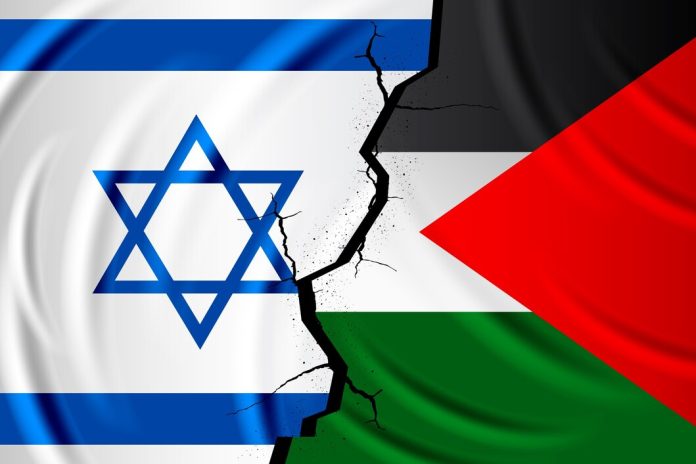The Israel-Palestine conflict, one of the world’s most enduring and contentious disputes, has captured global attention for decades. Rooted in historical, political, and religious factors, the conflict continues to be a significant source of tension in the Middle East and beyond. This article aims to provide a comprehensive overview of the Israel-Palestine issue, its historical context, and the ongoing challenges and potential pathways to peace.
Jerusalem Through the Ages: A Tale of Conquest and Resilience
The annals of history are replete with accounts of Jerusalem’s shifting fortunes, its capture, and the resilience of its inhabitants. Time and again, Jerusalem has been at the heart of profound transformations, shaping the destiny of its people.
In the year 597 BC, Jerusalem surrendered, a city subdued. Yet, the Israelite spirit remained indomitable, sparking renewed resistance. The year 587-586 BC witnessed the city’s utter destruction following a protracted siege. In these harrowing times, large numbers from the resilient population, chosen from the finest elements, were forcibly deported to Babylonia.
Centuries later, in AD 70 and again in AD 135, Jerusalem faced the wrath of the Romans, who razed the city to the ground and scattered its Jewish inhabitants across distant lands. Remarkably, many of the Jews retained their identity as a people, determined to defy oblivion. Yet, the lost tribes remained scattered, their lineage largely obscured.
Then, in 1187, a pivotal moment dawned when Saladin’s Muslim army emerged victorious in the Battle of Hattin. The subsequent conquest of Jerusalem heralded a new era, as almost all the cities and citadels of the Kingdom of Jerusalem fell to Saladin’s forces. In 1517, the formidable Ottoman Empire claimed dominion, a rule unbroken until the British triumphed in 1917. The British Mandate for Palestine assumed control, overseeing the region until 1948 when, against the backdrop of ancient Israel, the Jewish State of Israel was proclaimed.
A later chapter unfolded in 1987 during the first Palestinian uprising, as HAMAS emerged from the crucible of resistance. An outgrowth of the Muslim Brotherhood’s Palestinian branch, it was born out of the Mujama al-Islamiya, founded in Gaza in 1973 as a religious charity, with a connection to the Egypt-based Muslim Brotherhood. HAMAS’s commitment to armed resistance against Israel and the aspiration for an Islamic Palestinian state in Israel’s stead has defined its path.
Today, the Palestinians encompass the Gaza Strip and the West Bank, including East Jerusalem. While the Palestinian Authority administers a portion of the West Bank, the majority remains under direct Israeli military and civilian control.
Well before the recent turmoil, HAMAS articulated its unwavering intent to resist Israeli occupation and sought retribution for Israel’s 2021 raid on Al-Aqsa Mosque, the third-holiest site in Islam, located in the Old City of Jerusalem. The living conditions in the Gaza Strip have deteriorated since the imposition of a blockade in 2007.
Amid this historical tapestry, 28 UN member states have not recognized Israel. These states, including 15 members of the Arab League and 10 non-Arab members of the Organization of Islamic Cooperation, bear witness to the enduring complexities that define this ancient land and its intricate history.
World War I and the Balfour Declaration
The course of history took a significant turn during World War I when the British Empire, along with its allies, sought to gain control of the Middle East. In 1917, the British government issued the Balfour Declaration, a statement of support for the establishment of a “national home for the Jewish people” in Palestine. This declaration had far-reaching consequences, as it laid the foundation for future Jewish migration and settlements in the region.
Mandate Period and Growing Tensions
Following World War I, the League of Nations granted Britain a mandate to govern Palestine from 1920 to 1948. During this period, tensions between the Jewish immigrants and the Arab Palestinian population escalated, largely driven by the increasing influx of Jewish immigrants. Arab Palestinians expressed concerns about displacement and the potential loss of their land and autonomy.
The United Nations Partition Plan
As the mandate period drew to a close, the United Nations proposed a plan to partition Palestine into separate Jewish and Arab states, with an international administration for Jerusalem. This plan was approved in 1947, but it was met with resistance from Arab states and Palestinian leaders. It marked a significant turning point, setting the stage for the declaration of the State of Israel in 1948 and the subsequent conflict and Palestinian displacement, known as the Nakba.
The Birth of Israel and Palestinian Displacement
In 1948, the State of Israel was declared, marking the beginning of armed conflict and widespread Palestinian displacement. Hundreds of thousands of Palestinians were either forcibly expelled from their homes or fled in the face of the violence. This traumatic event is known as the Nakba, or “catastrophe,” for the Palestinian people.
The Israel-Arab Wars
The Israel-Arab conflict persisted through multiple wars, including the 1948 Arab-Israeli War, the 1967 Six-Day War, and the 1973 Yom Kippur War. These conflicts further entrenched divisions and territorial disputes. Israel gained control of the West Bank, East Jerusalem, and the Gaza Strip during the Six-Day War, areas that have since become focal points of contention.
The Pursuit of Peace
Over the years, numerous efforts have been made to find a peaceful resolution to the Israel-Palestine conflict. The Oslo Accords in the 1990s established a framework for negotiations, and the idea of a two-state solution emerged, with Israel and a future Palestinian state coexisting side by side. However, a final peace agreement has remained elusive due to numerous obstacles, including disputes over borders, the status of Jerusalem, the right of return for Palestinian refugees, and the future of Israeli settlements.
Current Challenges
The Israel-Palestine conflict remains fraught with challenges and ongoing violence. Issues such as Israeli settlement expansion in the West Bank, the status of East Jerusalem, and the Gaza Strip’s dire humanitarian situation continue to contribute to the conflict’s intractability. Clashes between Israeli security forces and Palestinians in East Jerusalem and Gaza have sparked violence and periodic escalations.
The Role of International Actors
The international community, including the United Nations, the United States, the European Union, and neighbouring Arab states, has been involved in various peace efforts. Yet, international diplomacy has been met with obstacles and frustrations, leading to repeated setbacks in the quest for a sustainable peace agreement.
Hope for the Future
Despite the complexities and decades of strife, hope for a peaceful resolution persists. Many civil society organizations, activists, and peacebuilders on both sides have continued to work tirelessly to promote dialogue, coexistence, and reconciliation. In addition, international organizations, governments, and regional powers continue to exert diplomatic efforts in pursuit of a just and lasting peace.
The Israel-Palestine conflict is a deeply rooted and multifaceted dispute with a long and complex history. While it remains a source of tension and violence in the region, there is a shared yearning for a just and lasting peace. Resolving this conflict will require continued diplomatic efforts, a commitment to dialogue and cooperation, and a recognition of the legitimate aspirations and rights of both Israelis and Palestinians. In a region marked by turmoil and division, the pursuit of a peaceful resolution to the Israel-Palestine conflict remains a beacon of hope for a more stable and harmonious future.





























